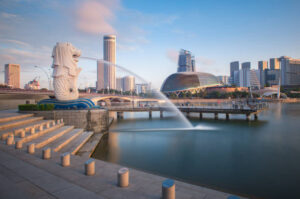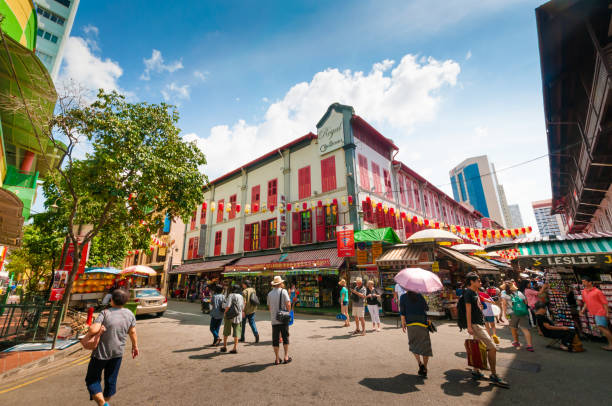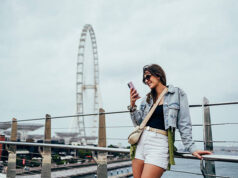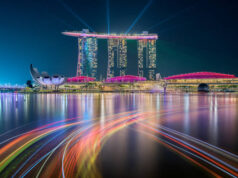Meal Planning the Day All the Way
A visit to the confi rhythm you spend in modern art museum singapore is able to make you feel that you entered several worlds without leaving the city. The itinerary is also surrounded with surprises as it peeps into the halls of large galleries and also in-store houses galleries. So how might a day of you with us in the museum be? This next example of a day to which you may put in the blanks an order of your own is this way.

Start the big names in the morning
A landmark is a good place to start with
Major museums you should leave for the mornings. There is an advantage to the larger museums, which start their work earlier in order to be able to enjoy their rich collection before the hordes arrive. To pass through the great doors, to glance around at the great architecture, and to move slowly through great galleries. The hours of the early morning are quiet, and thus it is easier to focus on the scale of the installations or on the scale of the video art.
Pause Reflection
After you have viewed some of the exhibits, do not hastily go out. Find a corner cafe or around Sit with your notes, draw if that feels right, or watch some of the photographs you have taken. This will be a hiatus to allow digestion of what you have seen instead of having it run together.
Lunch Time: Lesser Museums
Air changing
Later in the day or first thing in the morning, one has to swap elongation with tightness. Smaller contemporary spaces are located throughout the city, and a quick train or bus ride should do the trick. They have learned simple yet flashy experimentation. Here you would be able to touch or play with light, sculpture objects made of recycled material, and immerse yourself in the sound ring travelling through a narrow corridor.
Eat what the locals eat.
It is easy to find such galleries in locations near to busy estates, hence lunch. Either dig into a plate of hawker food or in a cafe. Such interruptions are false to the episode of art and everyday comings and goings–one moment your thoughts are of abstraction, the next of swabbing away noodles at a plastic table. That contrast is in the fun.
Afternoon: Experiment into Experimental Spaces
Concepts and context Industrial Corners and industrial Edges
In the afternoon, one must not miss a chance to visit those spaces that are less conventional. Exhibition areas may take the form of warehouses, abandoned shop houses, studios or areas in secret locations. Rough locations are such The surrounding walls might not be complete. The lamps to be used in lighting are reused lamps. In its incompleteness it thrives. It adopts only highly energetic performance pieces and pop-up installations that are not achievable through formal museums.
Engage Directly
There is a smaller number of visitors, so it is easier to communicate with curators or even artists themselves. Speak about the concept behind a work or even the character of manners. Roman dialogues achieve the effect of dislodging your frames better than a whole page of material. It is the interactions that transform viewing into dialogue and make the experience deeper.
Evening: Art in the open Supper
Public Installations
When your day is dragging, go out and find art other than a wall. One may see the installations, which are put in places like plazas, gardens, and even MRT stations. They may be made out of sculptures, murals and interactive displays. An exercise that consists of having to go and look around among people avoids the fatiguing element of observing paintings each time. Installed out-of-doors, the works are also placed in relation to the urban environment, breaking the distinction between urban space and art.
Evening: Modern Flare
Night Exhibitions
In some museums and galleries, others open later in the evening. Night visits are special in a different way–fewer people, dim light and an atmosphere of something intimate. Installations with projected or light effects are particularly convincing after sunset. A bright impression is saved at the end of the day.
Dinner Conversations
Finally, end the day with dinner in the neighborhood, hopefully with the friends you went with. Explain what confused or distressed you most or what you would not like to do next time. Such discussion renders a day of living place rather than the displays themselves.
Why This Itinerary Works
Equilibrium of Scale
There is the danger of an exhausting day of art. The combination of large constructions and small galleries and outdoor objects is a method to reach the balance of powerfulness. The bigger museums provide size and proportions. These are smaller rooms, and they offer comfort and challenges. Experiences outside provide a refreshing of the senses.
Human Connection
Another attribute of this tourism itinerary that makes it so interesting is that it is based on interaction. The day is bonded when it comes to transformation through chats with people, sharing a meal together, and so on. Art will influence more of a social undertaking as opposed to an individualistic one.
Day Tips Art
Go Light
Along with the board, pad and steno, why take a heavy bag? The galleries are in most case small and large objects are an obstruction.
Stay Flexible
You do not have to see it all. There are some who will need more time to work than others. Flexibility will see it more like exploration and not a checklist.
Sleep When You Need to sensor
Museum fatigue is a real phenomenon. Catch a seat where you can. Sitting is not a waste of time–it assists in narrowing in on the future.
Looking Ahead
A single visit to modern museums in Singapore will show that modern art does not refer to motionless canvas only. It drops on warehouses, alleys, galleries and squares of the city. Each station is a part of a new dimension in the creative image of the city.
At the end, you learn that it is not just institutions where you can have a modern art museum Singapore experience. It is about movement, dialogue and discovery all combined in an isolated day that you will bring with you well beyond the moment the doors leave.










